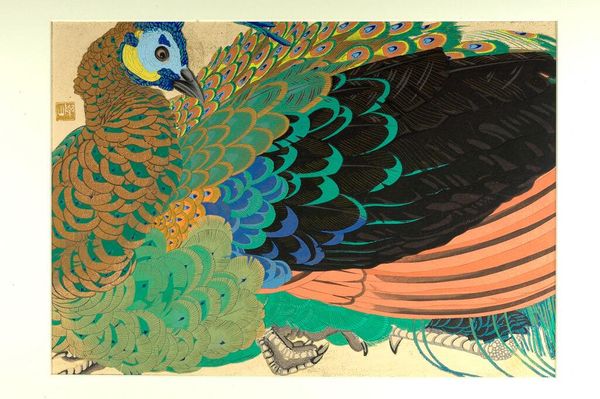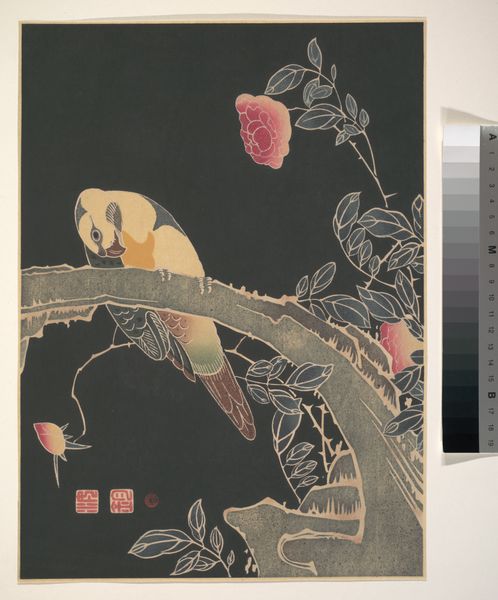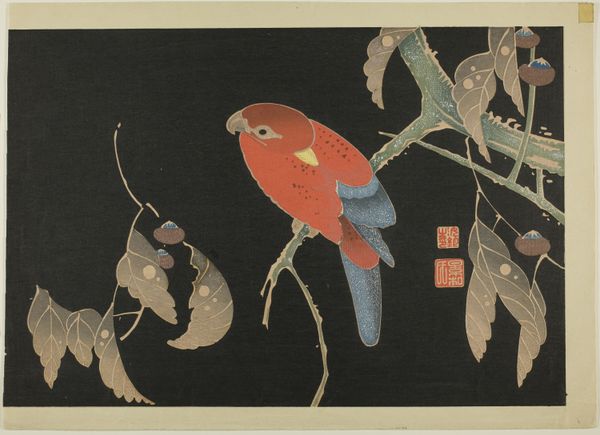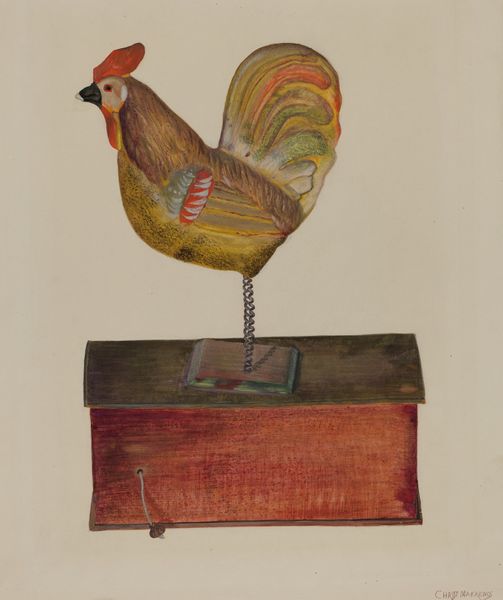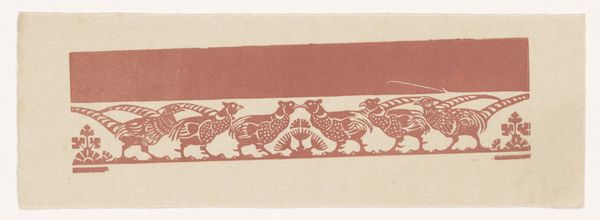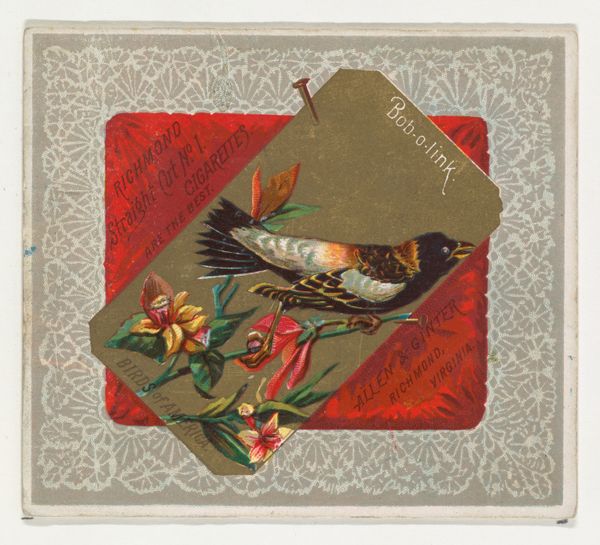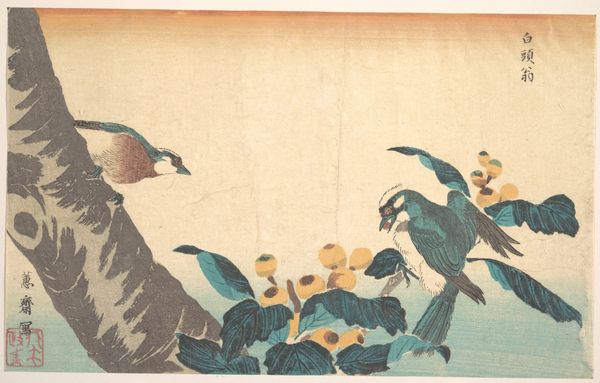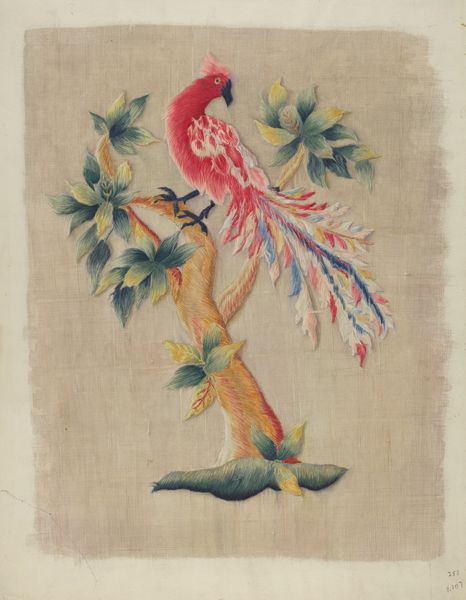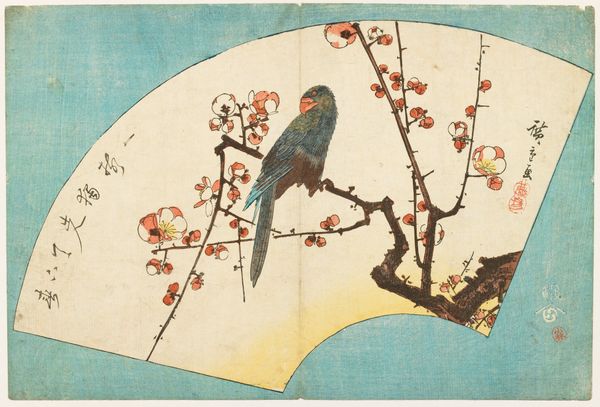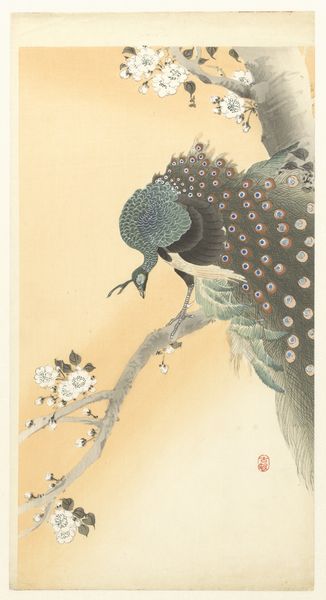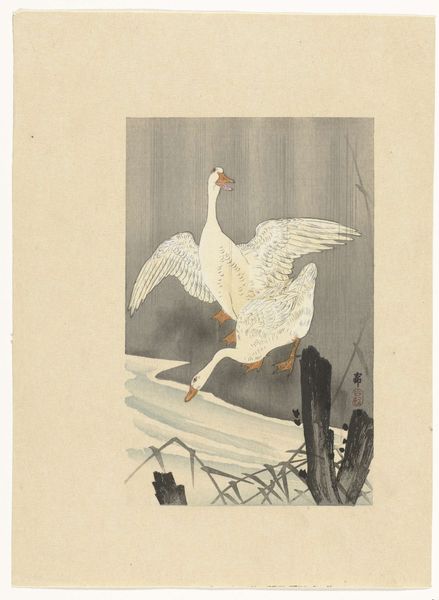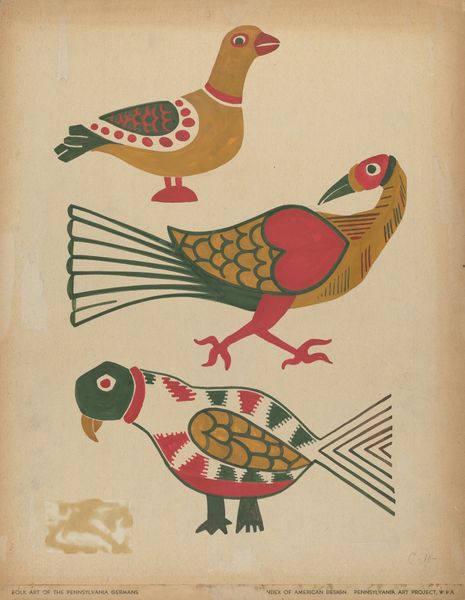
Dimensions: 10 x 14 1/2 in. (25.4 x 36.8 cm)
Copyright: Public Domain
Curator: Welcome. We're looking at “Golden Pheasant in the Snow,” a woodblock print likely created between 1890 and 1910. It's currently housed in the Metropolitan Museum of Art. Editor: Striking! That high-contrast field of black really makes the figure jump out. I find its boldness almost arresting, considering it’s a print. Curator: Indeed. The pheasant itself carries significant symbolic weight in East Asian art, often associated with beauty, good fortune, and even imperial authority. Editor: I notice how the meticulous articulation of the pheasant’s plumage contrasts so deliberately with the flat expanses of snow and void. The patterning is exquisite. Each feather seems meticulously rendered. Curator: Ukiyo-e prints like this one served as popular art. This work also uses some visual strategies employed by literati painting in China. Consider the motif of bamboo – suggesting resilience in the face of winter. Editor: It’s remarkable how much texture they achieve. The varied layering of pigment lends a unique haptic feel that one rarely finds to this extent in woodblock prints. The artist has also balanced a flattened composition and pictorial space. Curator: And while a single pheasant could stand for happiness, given the deep snow, it can stand for surviving trials and hardship with resilience and grace, reflecting a kind of folk wisdom. Editor: Precisely. It’s that juxtaposition of ornamental flourish and almost stark simplicity which grabs me. It forces you to see it not just as representation, but also as pure form, pure composition, a structured interplay of color and line. Curator: Absolutely. Considering the era, that emphasis on natural beauty offered solace and aspiration, even resistance during difficult times, holding onto tradition when the world moved forward into modernity. Editor: So, while initially captivating for its visual punch, reflecting more closely has unveiled further depths of artistry and embedded meaning. A fine piece! Curator: A fascinating example of folk art blending artistry, cultural symbolism, and an eye for visual aesthetics, very pleasing indeed.
Comments
No comments
Be the first to comment and join the conversation on the ultimate creative platform.

